Medication Timing Calculator
Medication Timing Calculator
Enter your medication details to determine the optimal timing relative to meals for maximum effectiveness and safety.
Timing Analysis
Enter your medication details to see the timing analysis.
Food-drug interaction is a change in how a medication works caused by the presence of food, caffeine, or alcohol in the gut. For most patients the biggest surprise is that a simple meal can either mute a drug’s benefit or crank up its side effects. This article breaks down the basics, shows which drugs you need to watch, and gives step‑by‑step habits that keep you safe while you take your prescriptions.
Why Food Matters When You Take Medicine
Studies from the FDA and the American Society of Health‑System Pharmacists estimate that about 30% of adverse drug reactions involve food. That translates to millions of unnecessary doctor visits each year. The reason is simple: food can alter the three pillars of a drug’s fate in the body-absorption, distribution, metabolism, and excretion (the ADME process). When ADME is disrupted, you either get too little of the drug (loss of efficacy) or too much (heightened side effects).
Take levothyroxine, a thyroid hormone replacement. If you swallow it with breakfast, the surrounding food drops its absorption by roughly a third, meaning you may still feel sluggish despite taking your dose. On the flip side, a grapefruit‑laden breakfast can boost the blood level of certain statins by more than threefold, pushing you toward muscle pain or even kidney injury.
Three Core Mechanisms of Interaction
Understanding the why helps you remember the how. The mechanisms fall into three buckets:
- Pharmacokinetic interactions: Food changes the drug’s ADME profile. Acidic foods raise stomach pH, which can cut absorption of acid‑labile drugs like penicillin G by up to 60%.
- Pharmacodynamic interactions: Food ingredients act on the same receptors or pathways as the drug. Vitamin K‑rich spinach directly counters warfarin’s anticoagulant effect.
- Physicochemical interactions: Food binds to the drug molecule, forming an insoluble complex that can’t be absorbed. Calcium in dairy binds tetracycline antibiotics, slashing their uptake by about 50%.
When you know which bucket a medication falls into, you can apply a simple rule-take it on an empty stomach, with a fatty meal, or avoid certain foods altogether.
High‑Risk Medication Classes and Their Food Triggers
Not all drugs are equally sensitive to what you eat. Below is a quick snapshot of the most common classes and the foods that matter most.
| Medication Class | Key Food Triggers | Typical Effect on Side Effects |
|---|---|---|
| Antibiotics (e.g., tetracycline, fluoroquinolones) | Calcium‑rich dairy, iron supplements | Reduced absorption → lower efficacy, may need higher dose |
| Statins (simvastatin, atorvastatin) | Grapefruit juice | Inhibited CYP3A4 → 3‑fold higher blood levels → muscle toxicity |
| Warfarin | Vitamin K‑rich greens (spinach, kale) | Counteracts anticoagulation → risk of clotting |
| Levothyroxine | Any food, especially high‑fiber meals | Decreased absorption → persistent hypothyroid symptoms |
| NSAIDs (ibuprofen, naproxen) | None required, but food protects stomach lining | Taking with food cuts ulcer risk from 15% to 4% |
| MAO inhibitors | Tyramine‑rich foods (aged cheese, cured meats) | Sudden blood‑pressure spike → hypertensive crisis |
Notice the pattern: antibiotics and statins need strict timing, while NSAIDs actually benefit from food. Knowing the class helps you decide whether to fast, snack, or steer clear of a specific ingredient.
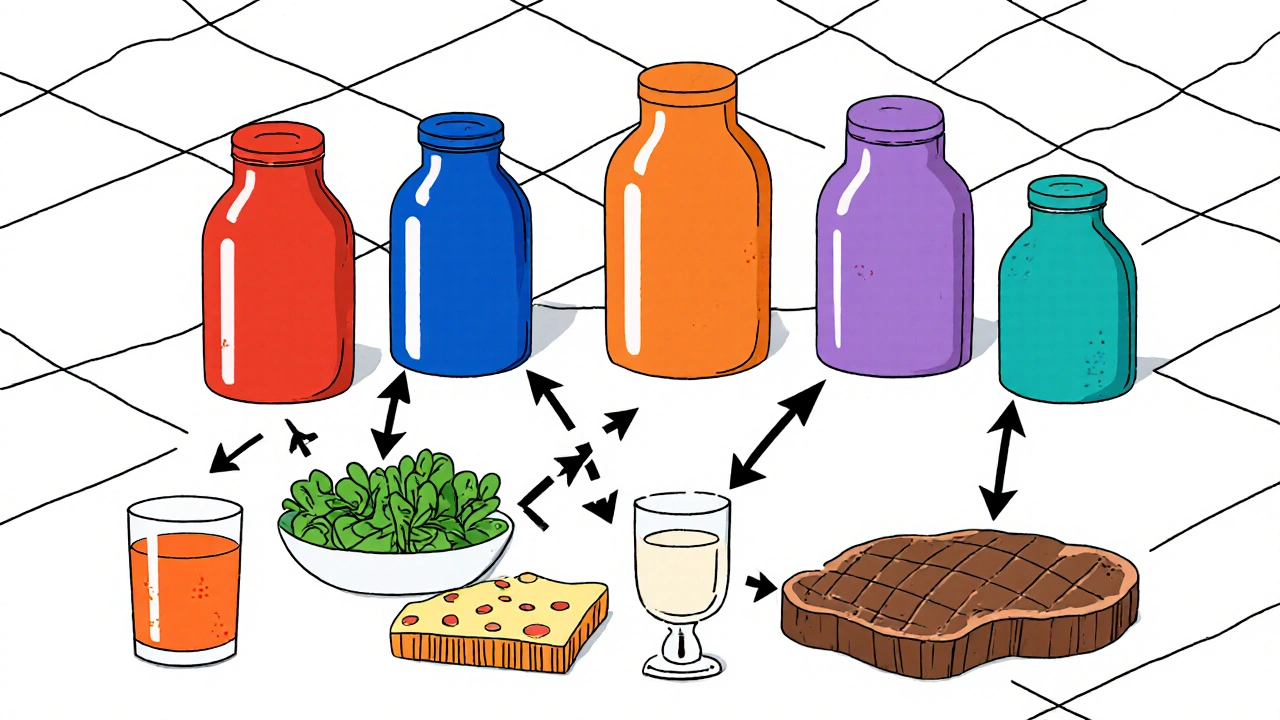
Practical Tips Patients Can Use Today
Here are five evidence‑backed habits you can start right now. Each tip links directly to a study or guideline mentioned earlier, so you know it’s not just opinion.
- Follow the 1‑hour/2‑hour rule. For drugs that require an empty stomach, take them at least one hour before or two hours after a meal. A University of Connecticut trial showed a 22% boost in bioavailability when this window was respected.
- Separate calcium‑rich foods from antibiotics. If you’re on a tetracycline or fluoroquinolone, finish the drug at least two hours before dairy, or wait four hours after.
- Keep vitamin K intake consistent. For warfarin patients, aim for a daily variation of no more than 10‑15 %. The American Heart Association links this consistency to 32% fewer INR swings.
- Avoid grapefruit if you’re on statins. Even a small glass (8 oz) can raise drug levels dramatically. The FDA reports over 1,100 emergency visits each year from this interaction.
- Use a medication‑timing app. Tools like MyMedSchedule generate personalized schedules that incorporate your typical meals and have cut interaction errors by 35% in a 2023 trial.
Write these rules on a sticky note, add them to your phone alarm, or ask your pharmacist for a printed chart. The goal is to turn a confusing concept into a repeatable habit.
How to Talk to Your Healthcare Team
One of the biggest failure points is a communication gap. Over two‑thirds of patients admit they don’t understand “take on an empty stomach” instructions. When you pick up a new prescription, ask these three questions:
- Should I take this medication with food, without food, or with a specific type of meal?
- Are there any foods, drinks, or supplements I must avoid?
- Do I need to keep a food or symptom diary?
Write down the answers verbatim. If the pharmacist uses medical jargon, ask for a plain‑language version. A clear record helps you stay consistent, especially if you see multiple specialists.
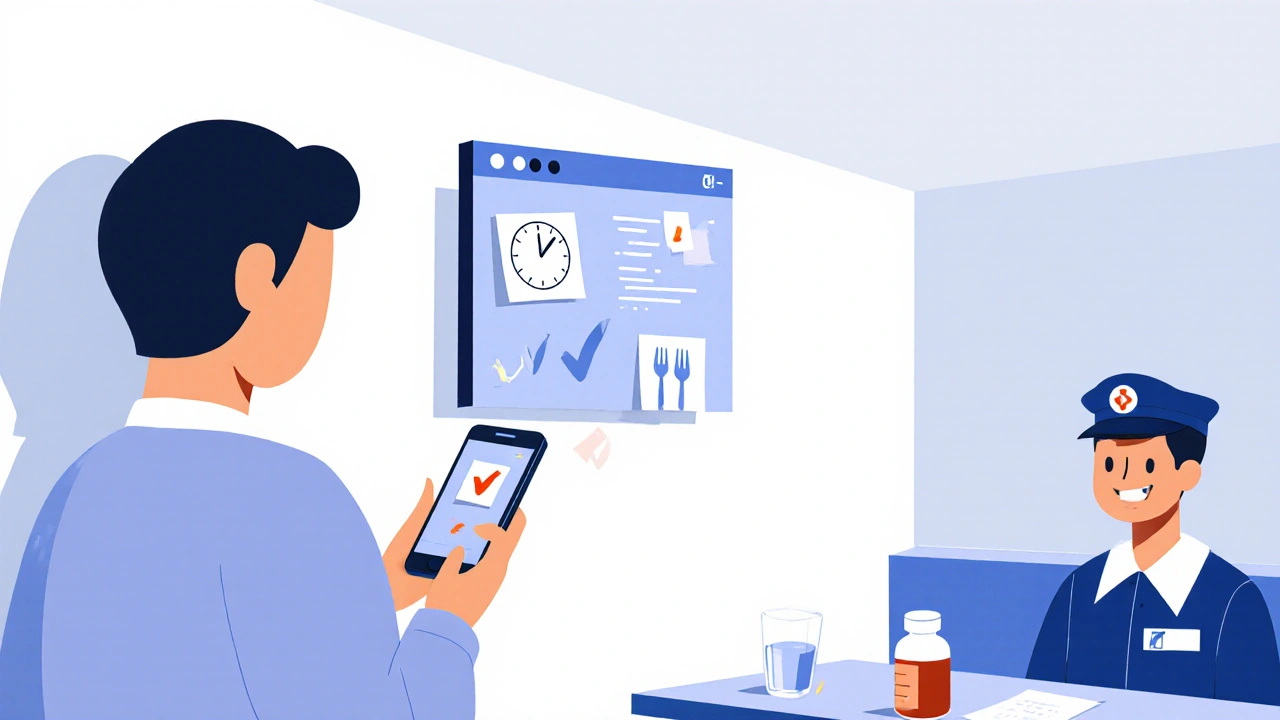
Emerging Resources and Future Directions
The landscape is changing fast. In 2024 the FDA mandated that every new drug label include precise timing instructions for food interactions. By 2026, the agency expects a 20% drop in related adverse events. Meanwhile, genetic testing for CYP3A4 variants is becoming routine before prescribing statins to grapefruit‑eaters, a move projected to prevent 400 hospitalizations annually.
Beyond policy, digital assistants are getting smarter. MyMedSchedule’s AI engine now cross‑references your grocery list with your medication panel, flagging risky combos before you shop. If you’re comfortable with tech, sign up for the free version and let it send you push reminders around meals.
Bottom Line Checklist
- Identify if your medication belongs to a high‑risk class (antibiotics, statins, warfarin, MAO inhibitors).
- Learn the specific food trigger(s) for that class.
- Apply the 1‑hour/2‑hour rule for empty‑stomach drugs.
- Keep a consistent intake of nutrients that affect drug action (e.g., vitamin K).
- Use a reliable app or printed schedule to track timing.
- Ask your pharmacist for a plain‑language summary each time you start a new drug.
Follow these steps and you’ll dramatically lower the chance of unexpected side effects while getting the full benefit of your therapy.
Frequently Asked Questions
Can I take my blood pressure pills with food?
Most oral antihypertensives (like amlodipine) are fine with food, but ACE inhibitors such as lisinopril are best taken on an empty stomach for optimal absorption. Check the label or ask your pharmacist.
Why does grapefruit affect so many drugs?
Grapefruit juice blocks the intestinal enzyme CYP3A4, which many drugs rely on to break down. When the enzyme is inhibited, the drug stays in the bloodstream longer and at higher concentrations, leading to amplified side effects.
I’m an elderly patient who forgets meals. How can I manage timing?
Set alarms on a phone or a dedicated pill‑timer device. Pair the alarm with a visual cue-like placing the medication bottle next to your coffee maker for morning doses taken before breakfast.
Do supplements like calcium or iron cause interactions?
Yes. Calcium binds to many antibiotics and iron can impair levothyroxine absorption. Space these supplements at least two hours away from the affected drug.
Is it safe to take NSAIDs with food?
Taking ibuprofen or naproxen with a meal actually protects the stomach lining and reduces ulcer risk from about 15% to 4%-so food is recommended for these drugs.

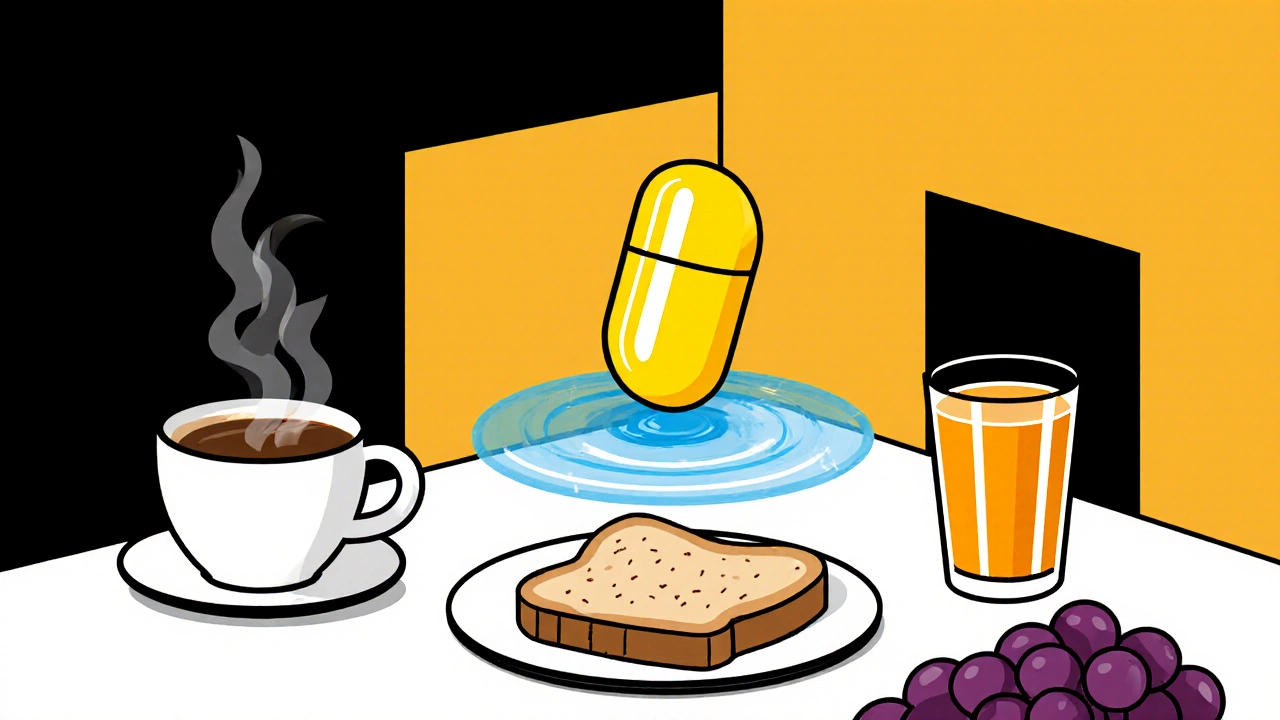
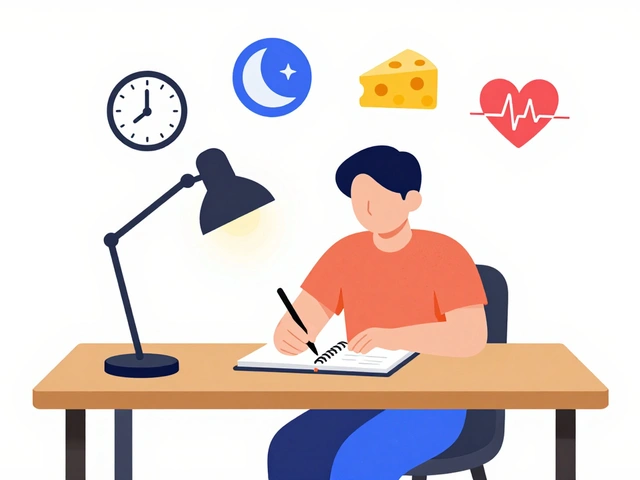
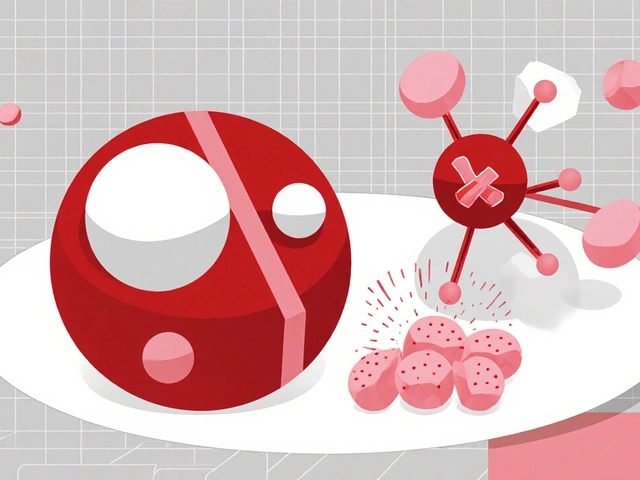

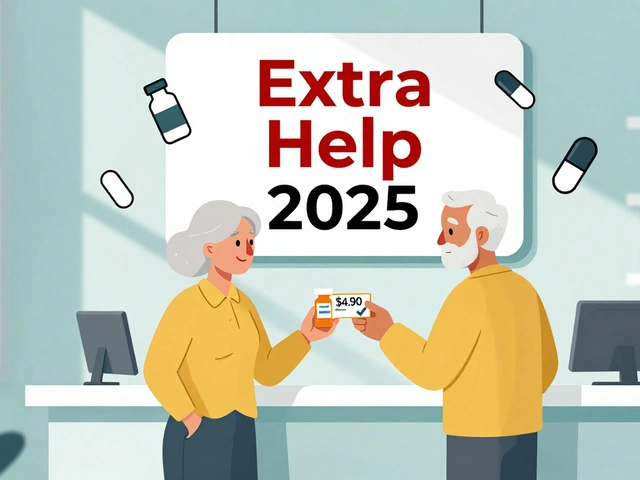
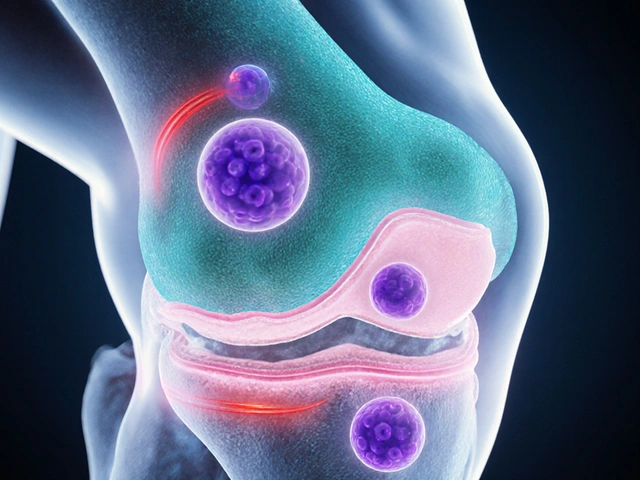
Erin Leach
October 26, 2025 AT 15:09I’ve been there, and keeping a simple schedule can make a huge difference.
Jacqui Bryant
November 4, 2025 AT 11:09Stick to the 1‑hour/2‑hour rule and you’ll notice fewer surprises. It’s not rocket science – just a little habit.
Paul Luxford
November 13, 2025 AT 07:09Understanding the three interaction mechanisms helps you decide when to fast, when to eat, or when to avoid a specific food. For most patients, applying the rule to just one high‑risk medication reduces side‑effects dramatically. Keep a short note in your wallet so the pharmacist’s advice stays fresh.
Nic Floyd
November 22, 2025 AT 03:09When you consider the CYP450 isoenzyme landscape especially CYP3A4 inhibition by furanocoumarins in grapefruit you’re basically modulating the pharmacokinetic clearance pathway 😊 the result is supratherapeutic plasma concentrations which can precipitate myopathy in statin‑treated patients the same principle applies to P‑glycoprotein substrates like certain antihistamines and the effect is dose‑dependent 😅 so always align your dosing schedule with the food matrix to maintain therapeutic index
Manoj Kumar
November 30, 2025 AT 23:09Ah yes, the ancient art of not mixing your kale with warfarin – truly the pinnacle of modern medicine, isn’t it? One might think we’d have smarter pills by now but no, we’re still reminded to read the tiny label. Still, if you enjoy a daily drama, keep ignoring the advice and watch the emergency room stats rise. At least you’ll have a story to tell at dinner parties.
Hershel Lilly
December 9, 2025 AT 19:09Thanks for the breakdown – I’ll make sure my grapefruit stays away from my statins.